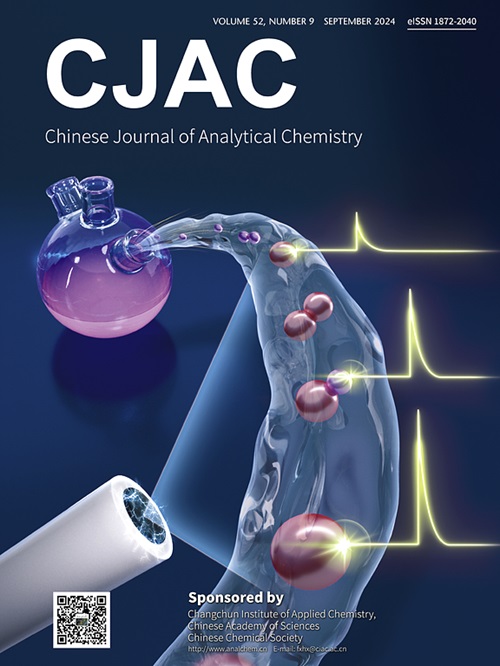Extraction of uranium (VI) with neutral organic phosphorus extractants: A calorimetric and spectroscopic comparison of di(1-methylheptyl) methylphosphonate vs. tri-n-butylphosphate
IF 1.3
4区 化学
Q4 CHEMISTRY, ANALYTICAL
引用次数: 0
Abstract
Both tri-n‑butyl phosphate and di(1-methylheptyl) methylphosphonate demonstrate exceptional extraction capabilities for 233U from irradiated thorium. While extensive literature exists regarding tri-n‑butyl phosphate-based extraction systems, comparative studies on di(1-methylheptyl) methylphosphonate remain notably limited. This systematic investigation provides a parallel comparison of the chemical behaviors between these two extractants under identical experimental conditions. Results reveal that the di(1-methylheptyl) methylphosphonate system exhibits enhanced hydrophobicity relative to tri-n‑butyl phosphate, correlating with reduced water co-extraction during the uranium recovery process. Raman spectroscopic analysis demonstrated about ∼30 cm–1 shifts in the uranyl symmetric stretching vibration for di(1-methylheptyl) methylphosphonate complexes compared to ∼15 cm–1 shifts of tri-n‑butyl phosphate complexes. This significant spectral displacement indicates stronger coordination bonding between phosphoryl oxygen of di(1-methylheptyl) methylphosphonate and uranyl ions. Isothermal titration calorimetry measurements quantified the extraction thermodynamics, yielding enthalpy changes of -12.83 kJ/mol and -11.32 kJ/mol for tri-n‑butyl phosphate and di(1-methylheptyl) methylphosphonate systems, respectively. Di(1-methylheptyl) methylphosphonate exhibits marginally less exothermic enthalpy despite its superior extraction efficiency. The counterintuitive observation suggests distinct thermodynamic compensation mechanisms. This likely involves more favorable entropy contributions in the di(1-methylheptyl) methylphosphonate extraction system and greater energy consumption during desolvation. This comprehensive comparison clarifies fundamental differences in extraction mechanisms between tri-n‑butyl phosphate and di(1-methylheptyl) methylphosphonate extractants, providing critical thermodynamic parameters for optimizing 233U recovery processes.

中性有机磷萃取剂萃取铀(ⅵ):二(1-甲基庚基)甲基膦酸盐与磷酸三丁酯的量热和光谱比较
磷酸三丁酯和二(1-甲基庚基)甲基膦酸盐都显示出从辐照钍中提取233U的特殊能力。虽然关于磷酸三正丁基萃取系统的文献大量存在,但对二(1-甲基庚基)甲基膦酸盐的比较研究仍然非常有限。这一系统的研究提供了这两种萃取剂在相同实验条件下的化学行为的平行比较。结果表明,相对于磷酸三丁酯,二(1-甲基庚基)甲基膦酸酯体系表现出更强的疏水性,这与铀回收过程中减少水共萃取有关。拉曼光谱分析表明,二(1-甲基庚基)甲基膦酸盐配合物的铀酰对称拉伸振动位移约为~ 30 cm-1,而三-正丁基磷酸配合物的位移约为~ 15 cm-1。这种明显的光谱位移表明,二(1-甲基庚基)甲基膦酸盐的磷酰氧与铀酰离子之间存在更强的配位键。等温滴定量热法量化了萃取热力学,得到磷酸三丁酯和二(1-甲基庚基)甲基膦酸盐体系的焓变分别为-12.83 kJ/mol和-11.32 kJ/mol。二(1-甲基庚基)甲基膦酸酯具有较好的萃取效率,但其放热焓略低。这一反直觉的观察结果表明了不同的热力学补偿机制。这可能涉及到二(1-甲基庚基)甲基膦酸酯萃取体系中更有利的熵贡献和溶解过程中更大的能量消耗。这项综合比较阐明了磷酸三丁酯和二(1-甲基庚基)甲基膦酸酯萃取剂在萃取机理上的根本差异,为优化233U回收工艺提供了关键的热力学参数。
本文章由计算机程序翻译,如有差异,请以英文原文为准。
求助全文
约1分钟内获得全文
求助全文
来源期刊
CiteScore
3.60
自引率
25.00%
发文量
17223
审稿时长
35 days
期刊介绍:
Chinese Journal of Analytical Chemistry(CJAC) is an academic journal of analytical chemistry established in 1972 and sponsored by the Chinese Chemical Society and Changchun Institute of Applied Chemistry, Chinese Academy of Sciences. Its objectives are to report the original scientific research achievements and review the recent development of analytical chemistry in all areas. The journal sets up 5 columns including Research Papers, Research Notes, Experimental Technique and Instrument, Review and Progress and Summary Accounts. The journal published monthly in Chinese language. A detailed abstract, keywords and the titles of figures and tables are provided in English, except column of Summary Accounts. Prof. Wang Erkang, an outstanding analytical chemist, academician of Chinese Academy of Sciences & Third World Academy of Sciences, holds the post of the Editor-in-chief.

 求助内容:
求助内容: 应助结果提醒方式:
应助结果提醒方式:


